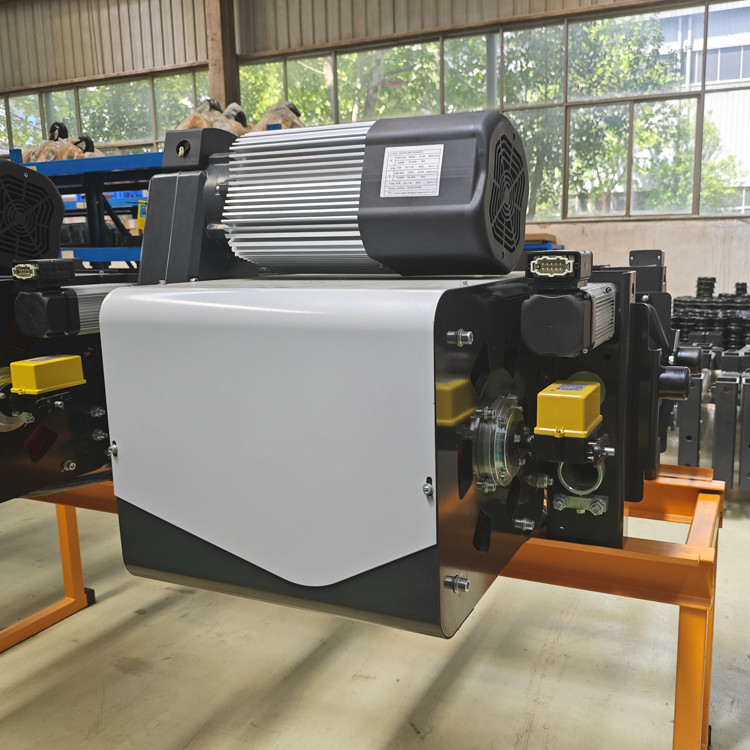European type electric hoists, designed according to strict European standards like FEM and DIN, offer a range of advanced features that set them apart in industrial lifting applications. Here’s a detailed breakdown of their advantages:
1. Superior Safety and Reliability
European hoists prioritize safety through redundant protection systems. For example, they often include dual braking mechanisms to prevent unintended load drops . These systems comply with CE certification and FEM/ISO standards, ensuring high safety factors and rigorous testing . Additionally, low-voltage control reduces ,while programmable limit switches and smart load monitoring enhance operational precision and prevent overloading .
2. Energy Efficiency and Precision
European hoists integrate full frequency conversion technology, enabling stepless speed adjustment and energy savings of up to 15% compared to traditional models . This not only lowers electricity costs but also minimizes mechanical wear. For instance, triple-geared motors and hard-tooth reducers deliver high torque with minimal noise (<70 dB) and smooth operation . The millimeter-level positioning accuracy achieved through frequency control is ideal for delicate tasks like automotive assembly or precision machinery handling .
3. Compact Design and Space Optimization
Their modular, C-shaped layout places the motor parallel to the drum, reducing overall dimensions by 30% compared to conventional designs . This low headroom configuration maximizes usable space in factories with limited ceiling height, allowing higher lifting heights without requiring taller infrastructure . The lightweight construction also minimizes load on supporting structures, making them suitable for retrofitting existing cranes .
4. Durability and Low Maintenance
European hoists are built with high-strength materials like French-imported wire ropes (2160 MPa tensile strength) and galvanized chains (DIN 5685), ensuring resistance to corrosion and wear even in harsh environments . Key components such as oil-bath lubricated gearboxes and sealed electromagnetic brakes are designed for 10+ years of maintenance-free operation, reducing downtime and lifecycle costs . For example, Demag’s DC Pro series offers a 2-year warranty and 10,000+ hours of service life under heavy-duty cycles .
5. Flexibility and Adaptability
The modular design allows easy customization for diverse applications. For instance, hoists can be equipped with wire ropes for heavy loads (up to 80 tons) or chains for precision lifting, and combined with trolleys or monorails for multi-axis movement . They also support multi-speed operation and remote control, enhancing versatility in logistics, construction, and manufacturing .
6. Environmental and Ergonomic Benefits
European hoists prioritize sustainability through lead-free coatings (RoHS-compliant) and energy-efficient motors (IP55/IP65-rated), aligning with EU environmental directives . Ergonomic features like adjustable pendant heights, ergonomic handles, and low noise levels (≤65 dB) improve operator comfort and reduce fatigue .
7. Industry-Leading Innovation
Recent advancements include IoT integration and smart anti-sway systems, which reduce load oscillation by 50% during lifting . Companies like Palfinger are also developing electric-hybrid hoists that combine battery power with regenerative braking, further cutting emissions and operational costs . These innovations position European hoists as leaders in the evolving material handling sector, where safety, efficiency, and sustainability are paramount.

Post time: Aug-01-2025







